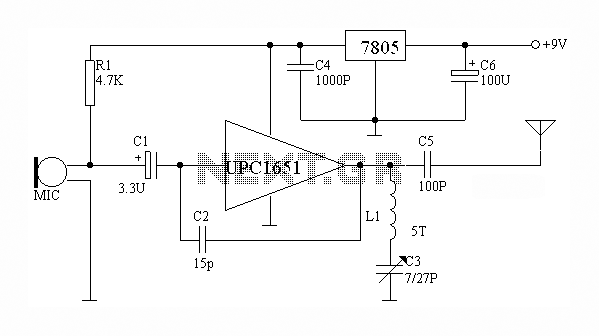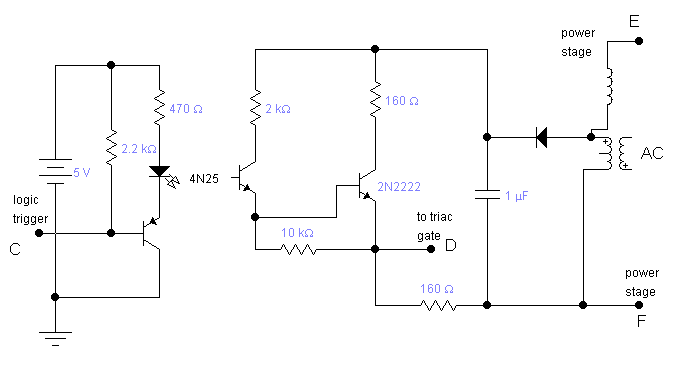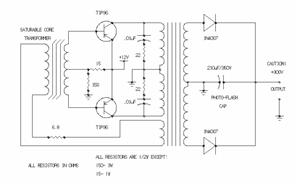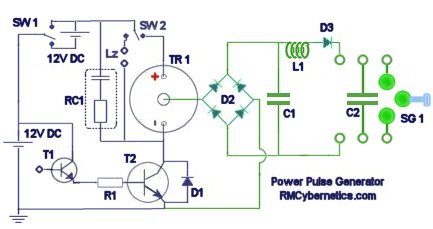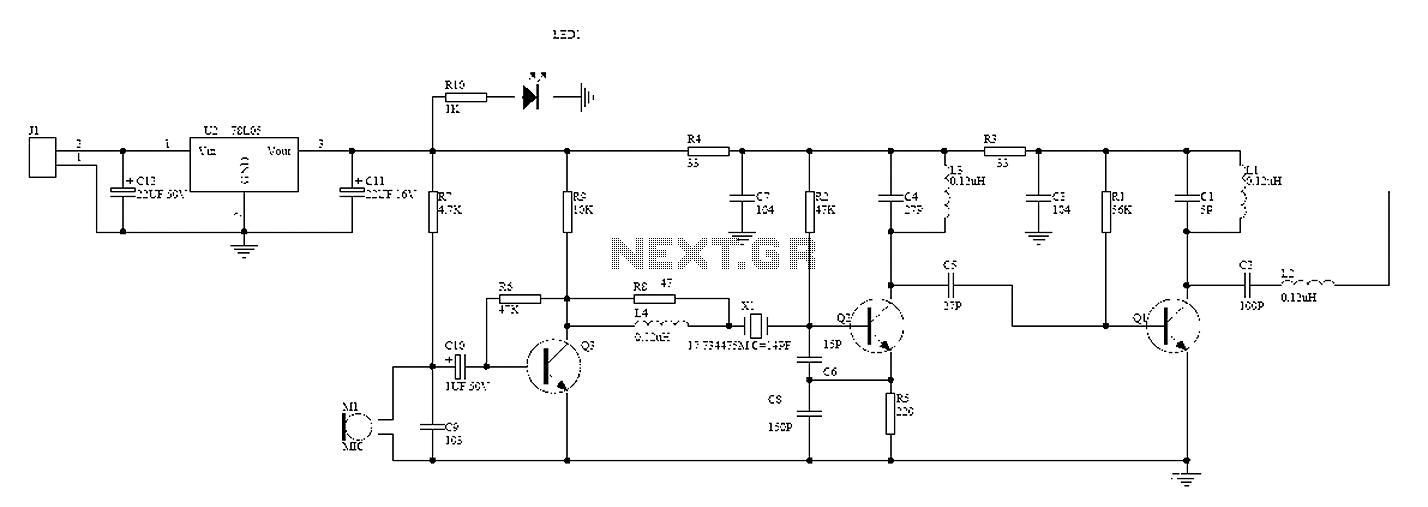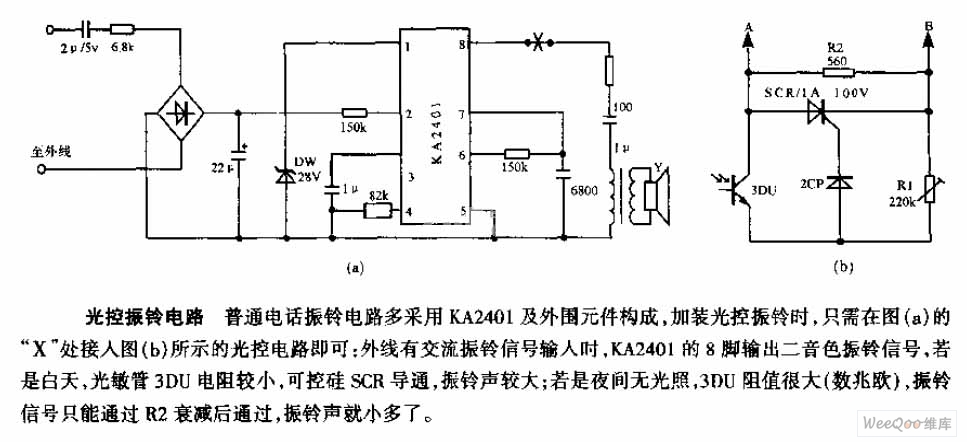
The Stunning Camera Circuit

The schematic for this project is not overly complex; however, it is crucial to understand the circuit board and its operation due to the high voltages generated. Below is a rough draft schematic of the camera used for this project. The schematic presented is not complete, but it conveys the general concept of the circuit. In the idle state, when no buttons are pressed, there is no electrical activity because power and ground are isolated from each other. When either the charge flash or release flash switches are activated, the situation changes, leading to significant actions such as taking a picture or charging the flash capacitor. This capacitor is notably large and can be dangerous when fully charged; it is advisable to discharge it by touching both leads with the tip of an insulated screwdriver. The large capacitor is necessary to provide the substantial current needed to produce the bright flash during a photo capture. The switch is activated at the moment a photo is taken. The actual switch is not visible unless the camera is disassembled. Upon disassembly, it becomes apparent that the button used to capture the image performs two functions: it takes the picture and simultaneously releases the flash. There is an additional push button used to charge the capacitor. In this project, the capacitor will be removed, and a standard single-pole single-throw (SPST) switch will be utilized to allow continuous current flow in place of the momentary current flow that occurs when the flash button is pressed.
The circuit schematic outlines the basic functionality of a camera's flash system while highlighting the importance of understanding high-voltage components. The circuit consists of several key elements: a power source, ground connections, switches for the flash functions, and a large capacitor that stores energy for the flash.
In the idle state, the circuit is open, preventing any current flow. The activation of either the charge flash or release flash switches closes the circuit, allowing current to flow from the power source through the circuit components. The flash capacitor, once charged, discharges rapidly when the camera takes a picture, producing a bright flash needed for capturing images in low-light conditions.
Safety precautions are critical when dealing with the charged capacitor. The recommendation to discharge the capacitor with an insulated screwdriver highlights the potential hazards associated with high-voltage components.
The modification of replacing the large capacitor with an SPST switch is a significant alteration in the circuit design. This change allows for a continuous flow of current, which may be necessary for specific applications where constant illumination is required, as opposed to the brief burst of light provided by the flash.
Understanding these components and their interactions is vital for anyone working with high-voltage circuits, as improper handling can lead to dangerous situations. Proper circuit design and safety measures should always be prioritized in electronic projects, especially those involving significant voltage and current levels.The schematic for this project is not terribly complex, however it is very important that you understand the circuit board and how it operates because of the high voltages that are generated. Below is a `rough draft` schematic of the camera used for this project. The schematic seen above isn`t complete, however the general idea of the circuit is seen within it. The way it works is during the idle state when nothing is being pressed, nothing happens electrically. This is because power and gnd have no way of getting to each other. When either the charge flash or release flash switches are triggered this fact changes and cool things start happening.
Either a picture is taken or the flash capacitor charges. This is a very large capacitor. It can be dangerous when fully charged, enough so that you should definitely discharge it by touching both leads with the tip of a screwdriver (with an insulated handle). The reason such a large capacitor is needed is because of the large amount of current necessary to create the bright flash seen when a photo is taken.
This switch is triggered right as a photo is to be taken. The actual switch cannot be seen unless you take apart the camera. Then you`ll see that the button used to take the picture actually does two things; takes the picture & releases the flash simultaneously. This is another push button that you hold down to charge the capacitor. In this project we`ll instead remove the capacitor and use a normal SPST switch so as to allow constant current flow where the capacitor used to be as opposed to momentary current flow when the flash button is pressed.
🔗 External reference
The circuit schematic outlines the basic functionality of a camera's flash system while highlighting the importance of understanding high-voltage components. The circuit consists of several key elements: a power source, ground connections, switches for the flash functions, and a large capacitor that stores energy for the flash.
In the idle state, the circuit is open, preventing any current flow. The activation of either the charge flash or release flash switches closes the circuit, allowing current to flow from the power source through the circuit components. The flash capacitor, once charged, discharges rapidly when the camera takes a picture, producing a bright flash needed for capturing images in low-light conditions.
Safety precautions are critical when dealing with the charged capacitor. The recommendation to discharge the capacitor with an insulated screwdriver highlights the potential hazards associated with high-voltage components.
The modification of replacing the large capacitor with an SPST switch is a significant alteration in the circuit design. This change allows for a continuous flow of current, which may be necessary for specific applications where constant illumination is required, as opposed to the brief burst of light provided by the flash.
Understanding these components and their interactions is vital for anyone working with high-voltage circuits, as improper handling can lead to dangerous situations. Proper circuit design and safety measures should always be prioritized in electronic projects, especially those involving significant voltage and current levels.The schematic for this project is not terribly complex, however it is very important that you understand the circuit board and how it operates because of the high voltages that are generated. Below is a `rough draft` schematic of the camera used for this project. The schematic seen above isn`t complete, however the general idea of the circuit is seen within it. The way it works is during the idle state when nothing is being pressed, nothing happens electrically. This is because power and gnd have no way of getting to each other. When either the charge flash or release flash switches are triggered this fact changes and cool things start happening.
Either a picture is taken or the flash capacitor charges. This is a very large capacitor. It can be dangerous when fully charged, enough so that you should definitely discharge it by touching both leads with the tip of a screwdriver (with an insulated handle). The reason such a large capacitor is needed is because of the large amount of current necessary to create the bright flash seen when a photo is taken.
This switch is triggered right as a photo is to be taken. The actual switch cannot be seen unless you take apart the camera. Then you`ll see that the button used to take the picture actually does two things; takes the picture & releases the flash simultaneously. This is another push button that you hold down to charge the capacitor. In this project we`ll instead remove the capacitor and use a normal SPST switch so as to allow constant current flow where the capacitor used to be as opposed to momentary current flow when the flash button is pressed.
🔗 External reference
Warning: include(partials/cookie-banner.php): Failed to open stream: Permission denied in /var/www/html/nextgr/view-circuit.php on line 713
Warning: include(): Failed opening 'partials/cookie-banner.php' for inclusion (include_path='.:/usr/share/php') in /var/www/html/nextgr/view-circuit.php on line 713
